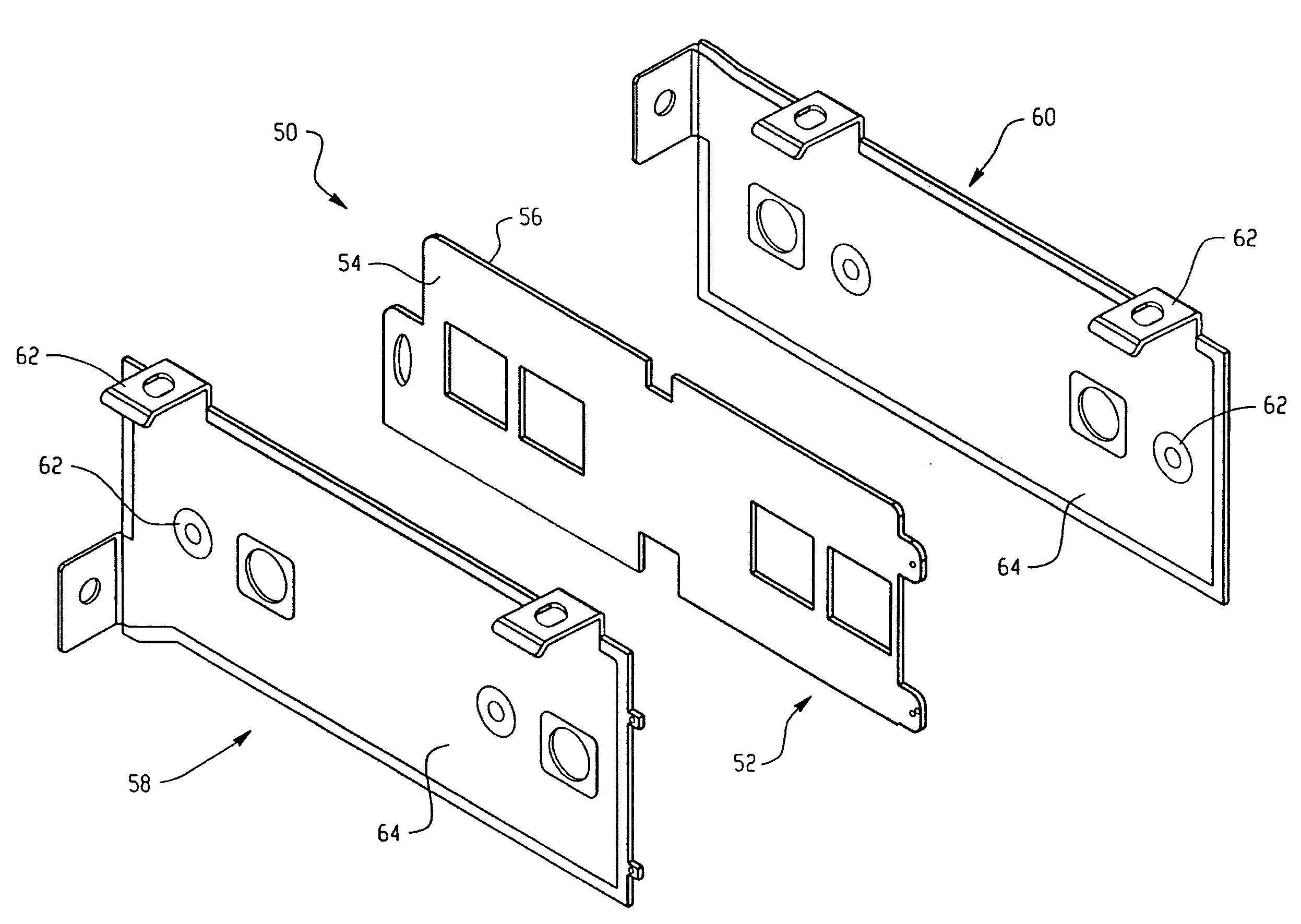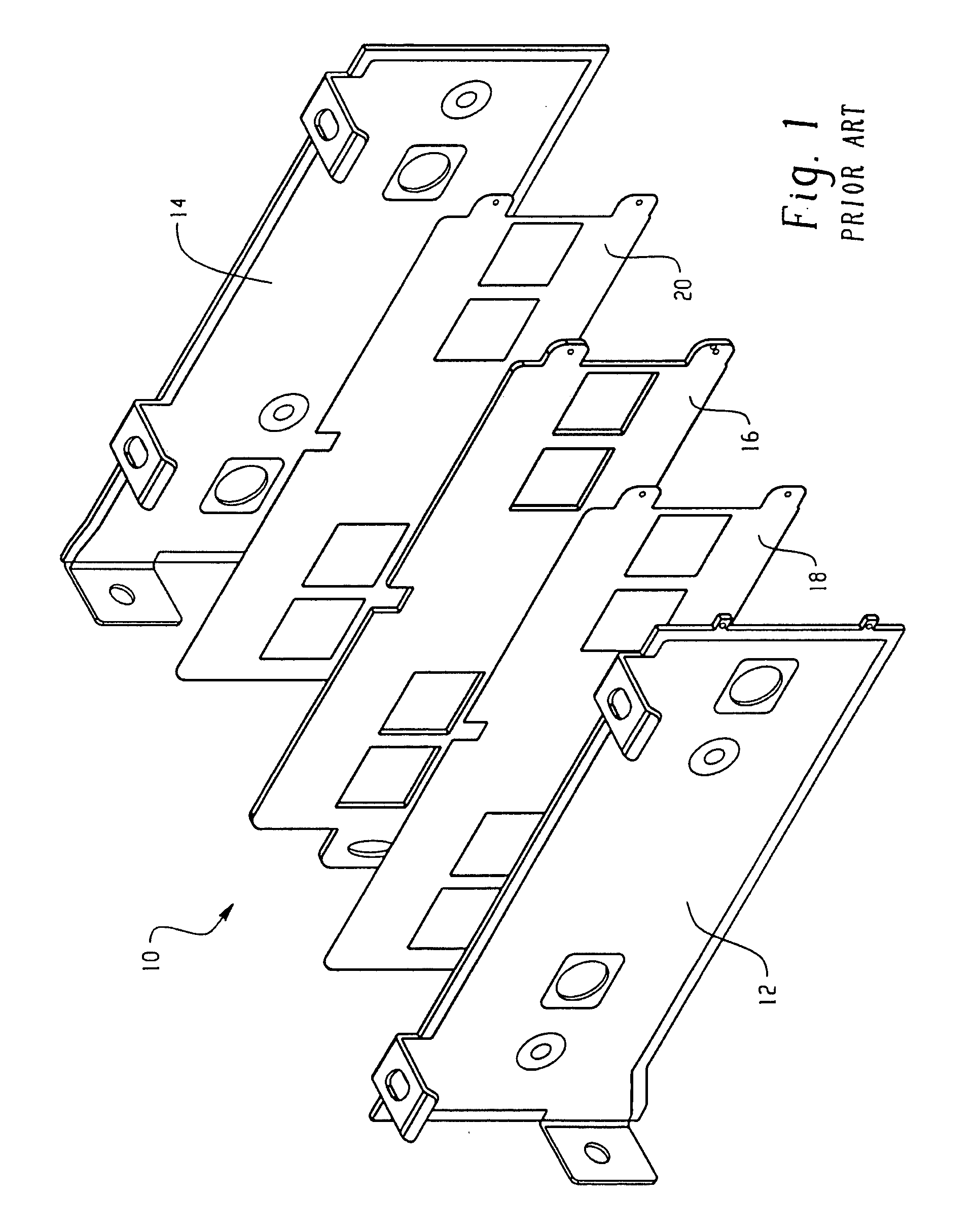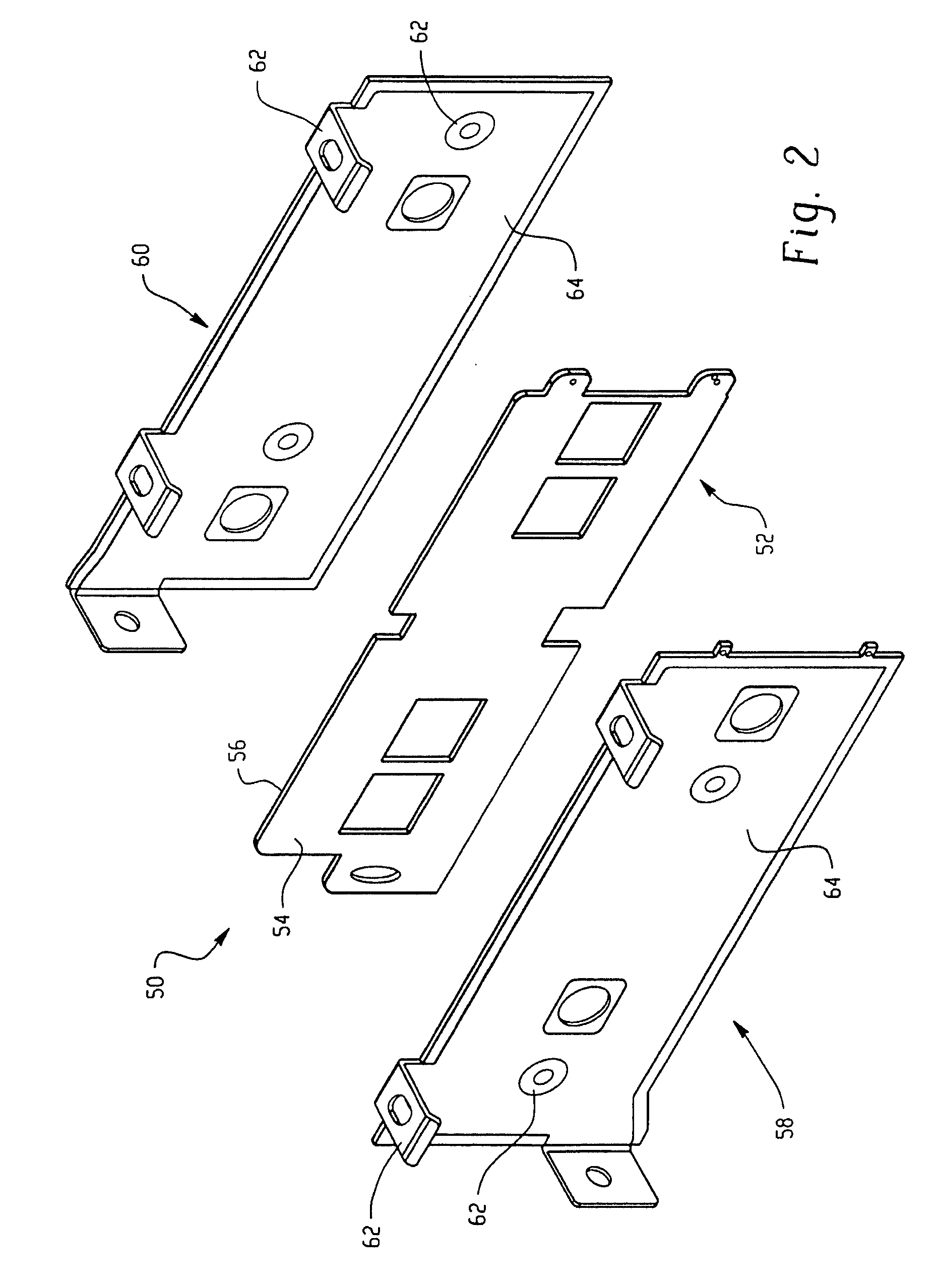Laminated bus bars and methods of manufacture thereof
a technology bus bars, which is applied in the direction of laminated bus bars, cables, insulated conductors, etc., can solve the problems of time-consuming, 45 minutes, energy-intensive process, etc., and achieve the effect of reducing the cost of production and time-consuming
- Summary
- Abstract
- Description
- Claims
- Application Information
AI Technical Summary
Benefits of technology
Problems solved by technology
Method used
Image
Examples
example 1
[0037]An evaluation of the adhesion properties of bus bars made with 3 different types of subassemblies was performed and the results reproduced in Table 1 below. Sample 1 used insulated subassemblies, wherein two bus bar subassemblies, “A” and “B”, were insulated with combinations of white opaque polyester insulation and insulation such as Rogers Induflex® LG4005. To laminate the insulated subassemblies, a layer of 72 grams per square meter (g / m2) of Kleiberit 708.1 polyurethane-based reactive hot-melt adhesive was applied to one side of a pre-tooled 2 mm thick non-woven glass reinforced polyester dielectric layer using a Hardo-GmbH PUR roll coating machine. The coating roll of the machine was set at a temperature of 120° C. and a speed of 5 meters per minute (m / min). The dielectric layer was preheated for 5 minutes to a temperature of 50° C. prior to being coated with the adhesive.
[0038]The adhesive coated side of the dielectric layer was then covered with a precut layer of silico...
example 2
[0045]An evaluation of the electrical properties of a bus bar comprising reactive hot-melt adhesive compared to a second lamination bus bar was performed and the results reproduced in Table 2 below. The partial discharge test measures the extinction voltage and current impulses (Q) of a bus bar insulation material. It is an important measure of potential defects or inhomogeneous insulation material between conductors, as explained in the standard for partial discharge International Electrotechnical Commission (IEC) 60270. The voltage profile, as shown in FIG. 6, is applied between two adjacent layers of the bus bar under test. The initial test voltage is set too high to stimulate the partial discharges. The voltage is then reduced to determine the extinction voltage and to set the partial discharge (PD)-test voltage. The PD level at the PD-test voltage should be below 10 Pico coulombs (pC), as this is the principle partial discharge that will not produce any defect in the insulation...
example 3
[0053]An evaluation of drop test performance of various reactive hot-melt adhesive bonded bus bars compared to second lamination bus bars was performed and the results reproduced in Table 3 below. Drop testing consists of dropping a bus bar from a height of 1.2 m upon a concrete floor. The number of “drops before delamination occurs” is recorded. It is generally required that a bus bar withstand at least 1 drop without delamination in order to be suitable for use in high performance applications. The sample bus bars were drop tested after 5 days storage at ambient conditions; after 3 weeks at 55° C. and 95% RH; and after 100 cycles from −40° C. to 105° C.
[0054]Sample 5 and Comparative sample B used pre-tooled bare copper bars, which were formed into insulated subassemblies by insulating them with Rogers Induflex® LG4005 insulation. One pair of subassemblies was laminated together using Kleiberit 708.1 polyurethane-based reactive hot-melt adhesive by the method described for Sample 1...
PUM
| Property | Measurement | Unit |
|---|---|---|
| pressure | aaaaa | aaaaa |
| thick | aaaaa | aaaaa |
| thickness | aaaaa | aaaaa |
Abstract
Description
Claims
Application Information
 Login to View More
Login to View More - R&D
- Intellectual Property
- Life Sciences
- Materials
- Tech Scout
- Unparalleled Data Quality
- Higher Quality Content
- 60% Fewer Hallucinations
Browse by: Latest US Patents, China's latest patents, Technical Efficacy Thesaurus, Application Domain, Technology Topic, Popular Technical Reports.
© 2025 PatSnap. All rights reserved.Legal|Privacy policy|Modern Slavery Act Transparency Statement|Sitemap|About US| Contact US: help@patsnap.com



